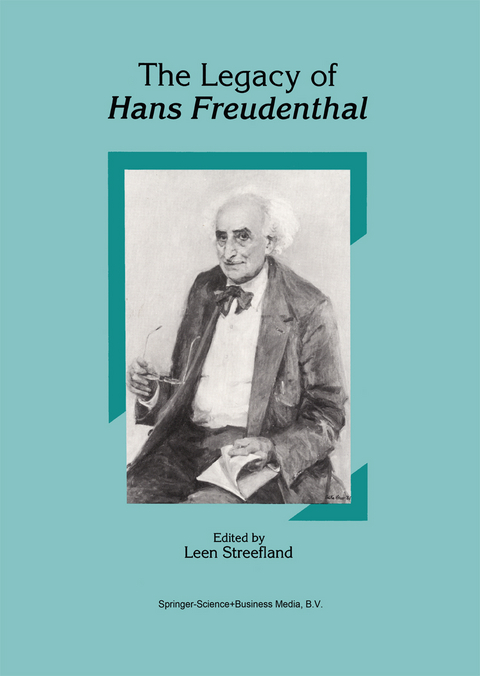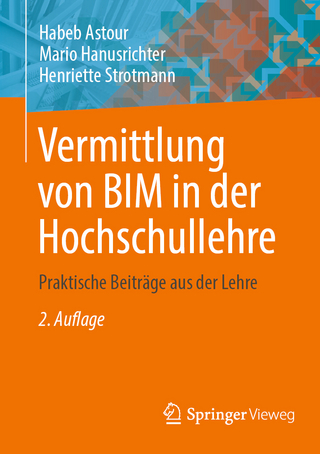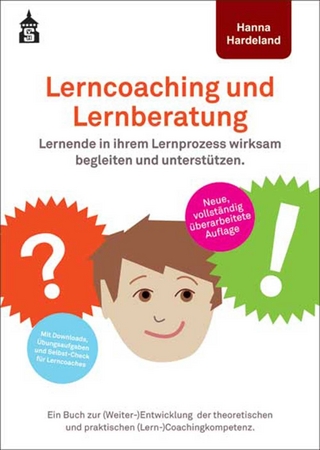
The Legacy of Hans Freudenthal
Seiten
2010
|
Softcover reprint of hardcover 1st ed. 1994
Springer (Verlag)
978-90-481-4354-2 (ISBN)
Springer (Verlag)
978-90-481-4354-2 (ISBN)
The Legacy of Freudenthal pays homage to Freudenthal and his work on mathematics, its history and education. Almost all authors were his scholars or co-workers. They testify to what they learned from him. Freudenthal himself contributes posthumously. His didactical phenomenology of the concept of force is both provocative and revealing in its originality, compared with what is usually found in physics instruction.
Freudenthal is portrayed as a universal human being by Josette Adda. He made considerable contributions to mathematics itself, e.g. on homotopy theory and Lie groups in geometry. The exposition of Freudenthal's mathematical life and work is on Van Est's account. Henk Bos discusses his historical work. The essay review of the 8th edition of Hilbert's Grundlagen der Geometrie serves as a vehicle of thought. The main part of the book, however, concerns Freudenthal's work on mathematics education. Christine Keitel reviews his final book Revisiting Mathematics Education (1991). Fred Goffree describes Freudenthal's `Working on Mathematics Education' both from an historical as well as a theoretical perspective. Adrian Treffers analyses Freudenthal's influence on the development of realistic mathematics education at primary level in the Netherlands, especially his influence on the Wiskobas-project of the former IOWO. Freudenthal once predicted the disappearance of mathematics as an individual subject in education sometime around the year 2000, because it would by then have merged with integrated thematic contexts. Jan de Lange anticipates this future development and shows that Freudenthal's prediction will not come true after all. Reflective interludes unveil how he might have influenced those developments.
Freudenthal contributed a wealth of ideas and conceptual tools to the development of mathematics education -- on contexts, didactical phenomenology, guided reinvention, mathematisation, the constitution of mental objects, the development of reflective thinking, levels in learning processes, the development of a mathematical attitude and so on -- but he did not design very much concrete material. Leen Streefland deals with the question of design from a theoretical point of view, while applying Freudenthal's ideas on changing perspective and shifting.
For teachers, researchers, mathematics educators, mathematicians, educationalists, psychologists and policy makers.
Freudenthal is portrayed as a universal human being by Josette Adda. He made considerable contributions to mathematics itself, e.g. on homotopy theory and Lie groups in geometry. The exposition of Freudenthal's mathematical life and work is on Van Est's account. Henk Bos discusses his historical work. The essay review of the 8th edition of Hilbert's Grundlagen der Geometrie serves as a vehicle of thought. The main part of the book, however, concerns Freudenthal's work on mathematics education. Christine Keitel reviews his final book Revisiting Mathematics Education (1991). Fred Goffree describes Freudenthal's `Working on Mathematics Education' both from an historical as well as a theoretical perspective. Adrian Treffers analyses Freudenthal's influence on the development of realistic mathematics education at primary level in the Netherlands, especially his influence on the Wiskobas-project of the former IOWO. Freudenthal once predicted the disappearance of mathematics as an individual subject in education sometime around the year 2000, because it would by then have merged with integrated thematic contexts. Jan de Lange anticipates this future development and shows that Freudenthal's prediction will not come true after all. Reflective interludes unveil how he might have influenced those developments.
Freudenthal contributed a wealth of ideas and conceptual tools to the development of mathematics education -- on contexts, didactical phenomenology, guided reinvention, mathematisation, the constitution of mental objects, the development of reflective thinking, levels in learning processes, the development of a mathematical attitude and so on -- but he did not design very much concrete material. Leen Streefland deals with the question of design from a theoretical point of view, while applying Freudenthal's ideas on changing perspective and shifting.
For teachers, researchers, mathematics educators, mathematicians, educationalists, psychologists and policy makers.
Une lumière s’est éteinte. H. Freudenthal — Homo Universalis.- HF: Working on Mathematics Education.- ‘The Bond with Reality is Cut’ — Freudenthal on the Foundations of Geometry around 1900.- Hans Freudenthal (17 September 1905–13 October 1990).- Thoughts on Teaching Mechanics. Didactical Phenomenology of the Concept of Force.- Wiskobas and Freudenthal: Realistic Mathematics Education.- The Design of a Mathematics Course. A Theoretical Reflection.- Between End and Beginning. Mathematics Education for 12–16 Year Olds: 1987–2002.- Hans Freudenthal, Revisting Mathematics Education. China Lecturers, Mathematics Education Library, Volume 9, 1991.
| Zusatzinfo | VIII, 164 p. |
|---|---|
| Verlagsort | Dordrecht |
| Sprache | englisch |
| Maße | 210 x 297 mm |
| Themenwelt | Mathematik / Informatik ► Mathematik |
| Sozialwissenschaften ► Pädagogik ► Erwachsenenbildung | |
| Sozialwissenschaften ► Pädagogik ► Schulpädagogik / Grundschule | |
| ISBN-10 | 90-481-4354-3 / 9048143543 |
| ISBN-13 | 978-90-481-4354-2 / 9789048143542 |
| Zustand | Neuware |
| Haben Sie eine Frage zum Produkt? |
Mehr entdecken
aus dem Bereich
aus dem Bereich
praktische Beiträge aus der Lehre
Buch | Softcover (2024)
Springer Vieweg (Verlag)
CHF 69,95
Lernende in ihrem Lernprozess wirksam begleiten und unterstützen. Ein …
Buch | Softcover (2024)
WBV Media (Verlag)
CHF 27,95
Prüfungsaufgaben - Rechnungswesen, Wirtschaft, Recht, Steuern
Buch | Softcover (2023)
Europa-Lehrmittel (Verlag)
CHF 39,90


